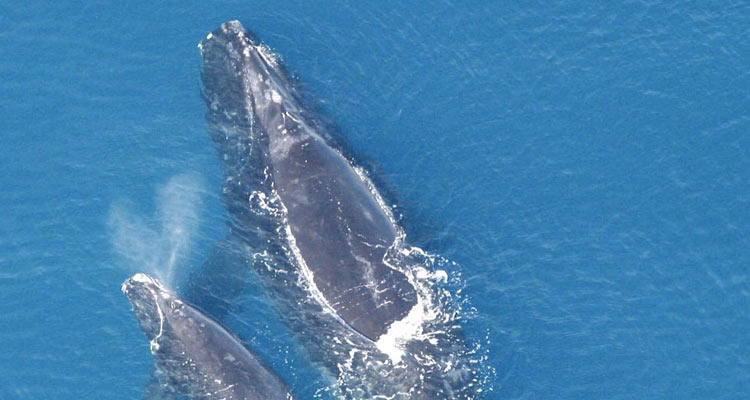The waters off the Atlantic coast are as much a highway as I-95, with leisure, commercial, and marine life traffic in constant motion up and down the Gulf Stream. Countless animals call this area home, including the extremely endangered North Atlantic right whale. Driven to near extinction before whale hunting was banned in 1935, the whale population slowly fought its way back to roughly 500 around 2010, but increases in ship strikes and entanglements in fishing equipment have started to reverse that trend. To make matters worse, a new threat has emerged in the form of the Navy’s new Undersea Warfare Training Range.
For years, litigation swirled around the 500-square-mile area off the coast of Jacksonville, Florida, selected in 2009 as the site for the range. In 2010, the Natural Resources Defense Council (NRDC) led a suit against the Navy to halt construction, arguing that it was too close to the only known calving and nursing grounds for right whales and did not include adequate safeguards for them as an endangered species. Ultimately, the courts decided the Navy was taking sufficient protective measures, and construction began in October 2014.
The NRDC, however, is not convinced. Ship strikes are already a major concern, with four whales dying in U.S. waters this past summer, and sonar could pose an even greater danger. While the range doesn’t directly overlap the critical habitat designated by the National Marine Fisheries Service (NMFS), studies of sonar and comparable sounds “have shown whales fleeing [up to] 150 miles away,” says Taryn Kiekow Heimer, Senior Policy Analyst with the NRDC. The latest research estimates that whales entangled in fishing equipment may burn as much as 25,000 extra calories per day engaging in normal activities. That alone is often enough to starve a whale to death, without adding the stress and physical exertion of disorientation or fleeing.
Sonar is turned off if whales are spotted in the blast range, but unfortunately, “any marine mammal observer—not just Navy—only spots [right whales] about 5% of the time,” says Heimer. They are dark, stay very close to the surface, and have no dorsal fin, she explains, making them “a sitting target for unintentional ship strikes.” Furthermore, the Navy has not adopted the only mitigation measure that Heimer believes would be effective at this point, which is to refrain from running exercises during the critical calving and nursing period, from November to April.
Construction of the range isn’t taking place during these months, but training exercises will. The Navy expects the range to be operational in the Fall of 2019, with full-scale training operations beginning Summer 2023. If training exercises led to any strandings or trauma, the Navy would certainly investigate the incident thoroughly, but with the population already so low, Heimer and others worry that even one incident could put the species over the edge.








